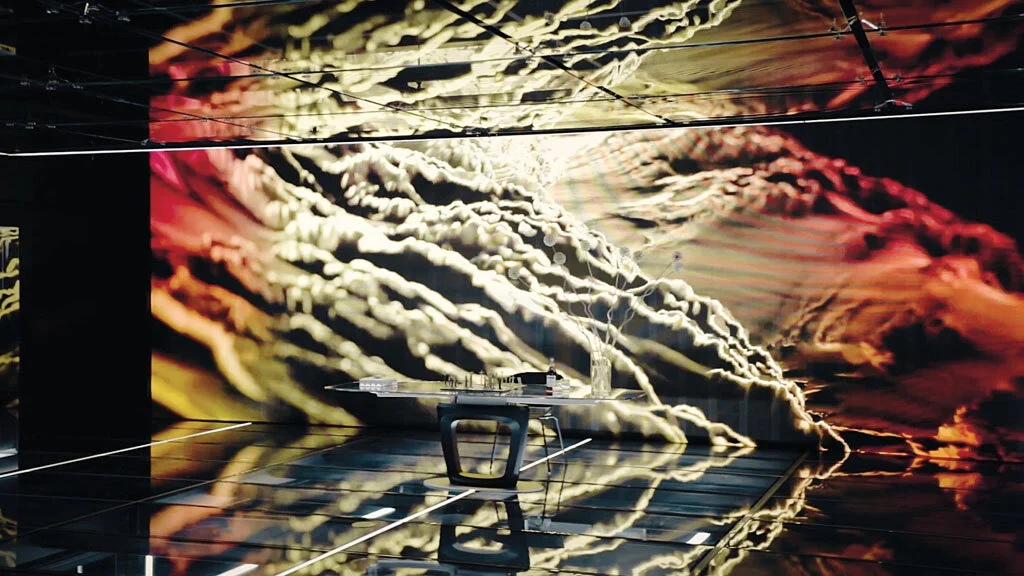Streaming services have won the battle over the box, and now the streaming war is in full gear. Netflix, HBO Max, and Disney+ have taken differing approaches to capturing a competitive advantage to be the top streaming service users turn to. Read about where they stand in this research by Helen Hejran.
The Four Technologies Used in Virtual Production
The visual effects (VFX) industry has come a long way in the past 30 years. Studios have discovered the importance of better production pipelines that create a more collaborative environment between directors, gaffers, and artists. This article will analyze four technologies that are used in virtual production, discussing how they work, who is implementing them in their productions, and how they will disrupt the industry.
How AR and VR are Changing Film: A Look at the Revolutionary Stagecraft, The Volume
Part 2: Surveys, Interviews and Recommendations for Documentary Distribution
Emerging Trends in Documentary Program Distribution focuses on understanding the current market for documentary programs and the current best practices to sell, distribute, and market documentary content. Part two of this research analyzes data and information collected through an audience survey and one-on-one interviews. This original research will be used in connection with the broader contextual research to provide recommendations for documentary filmmakers on the best paths for taking their work to the market.
Emerging Trends in Documentary Program Distribution: Part 1
Documentary content has long been a staple of culture and entertainment in the United States, but emerging technologies are changing the way this programming is consumed. Emerging Trends in Documentary Program Distribution focuses on understanding the current market for documentary programs and the current best practices to sell, distribute, and market documentary content. This research article is presented in two parts. The first lays out an overview of the documentary market and then moves into an analysis of how the consumption of video content has changed due to emerging technologies.
The Streaming War During the Covid-19 Pandemic
The Covid-19 pandemic has drastically disrupted all business sectors, including the arts, culture, and entertainment industries. Unfortunately, the Covid-19 pandemic’s impacts are far more permanent for an audience-oriented industry that requires a high level of engagement. The business model might be fundamentally changed and there will certainly be a shift in how content is produced and consumed. While lockdowns and social distancing measures to contain the pandemic have had a huge impact on the traditional movie industry, the video streaming model seems to be the greatest beneficiary in this difficult time as people are isolated at home, which is the ideal condition for binge-watching. This white paper looks at the status of the streaming industry before and after the first Covid-19 outbreak.
Case Study of China’s Entertainment Market under COVID-19
As we near the end of 2020, it is important to consider the emerging opportunities for live television as the world transitions through the global pandemic. Live performers sharing space is one aspect of a live broadcast. A second element is a live audience. The following case study focuses on how China restarted its entertainment industries and how other markets might adapt as well.
How Covid-19 Has Impacted Live Audience-Based TV Shows
One of the areas of the entertainment industry that has been hit the hardest by the Covid-19 pandemic is live audience-based TV. Not only is it difficult for show participants to film in person, but social distancing guidelines also prevent live audience members from attending normally. To investigate the effects of the pandemic on live audience-based TV, this post will look at the political, economic, social, and technological factors that are impacting live entertainment in the United States.
From the Hollywood Bowl to Drive-In Concerts: Live Music During Covid
Live music venues—from large to small—have had to look for alternative ways to stay afloat and engage audiences while the pandemic prevents people from gathering en masse. Many places have turned to technology for solutions, frequently in the form of live streamed concerts. The following three cases provide a breadth of examples for how venues are innovating in the face of adversity and planning to implement technological solutions before and after reopening. The Hollywood Bowl is an example of a large, outdoor venue that could benefit from using software to map out what seats could safely be filled. As a small, independent venue, Mr. Smalls Theatre exemplifies how to use technology to remain connected with the community. A trend among artists and performing arts organizations across the United States is the repurposing of the drive-in model. We will look at how that can provide a safe, live complement to digital offerings.
Adapting to the Pandemic: The Enterprise Center and Wolf Trap
To investigate how the Covid-19 pandemic is affecting the live music industry, we will look to case studies of venues that normally host concerts. In this first set of case studies, we will look at the Enterprise Center and the Wolf Trap Foundation for the Performing Arts. The Enterprise Center is a 22,000 capacity (for concerts) arena in St. Louis, Missouri. Located in Northern Virginia, Wolf Trap Foundation for the Performing Arts was the first National Park dedicated to the performing arts. Performances take place at the Filene Center, The Barns, and Children’s Theatre-in-the-Woods, and the foundation also operates the Wolf Trap Opera Company. Because it is currently not safe for either of these venues to operate at full capacity, these case studies will investigate technology-based alternatives.
How Technology is Helping the Live Music Industry Respond to Covid
The music industry in the United States has been a thriving industry since the success of publishers selling sheet music in “Tin Pan Alley” in the late 19th century. Over time, with technological advances, the music industry has blossomed into the multi-billion dollar industry it is today. As you are probably aware, however, the live music industry has been hit hard by the pandemic. The music industry is very familiar with disruptions, but Covid-19 has posed a new set of challenges for it to recover from. This post introduces live music performance as part of the arts and entertainment ecosystem. Throughout the upcoming case studies, we will explore the different types of technology that are being utilized in live entertainment to assist in reopening and the technology that is allowing the public to be entertained.
Virtual Production in Television and Beyond
As discussed in Part I of this series, virtual production (VP) is the unique intersection of physical and digital filmmaking that blends video game technology with filmmaking techniques into the pre-production and production process. VP is not just the technology that allows the integration of digital and traditional techniques, but also the methods through which it is used. If implemented in the TV industry, VP could lead to reduced costs since it allows for increased efficiency in the production process. Many other industries could also learn from this streamlined process, including live entertainment and the arts.
An Introduction to Virtual Production and Its Use in the Entertainment Industry
Virtual production (VP) is “a broad term referring to a spectrum of computer-aided production and visualization filmmaking methods.” It is not just the technology itself, but also the methods through which it is used. In Parts I and II of this series, we are investigating the technology as well as the methodologies of VP in the broadest definition. The types of VP we will discuss in this post are visualization, performance capture, and LED walls. While VP has benefited the film industry specifically, as innovation with the technology continues, other fields of entertainment—such as live entertainment, fashion, and news reporting—are also leveraging virtual production’s capabilities. The arts and entertainment sector could benefit from learning more about these methods and considering how they could apply these technologies to create engaging virtual experiences.
What Arts Organizations Can Learn From Sports: The NBA
This week, AMT Lab has been investigating what lessons arts organizations can learn from sports as they seek to provide engaging digital experiences for audiences. The National Basketball Association (NBA) is the most prestigious and well-known basketball league in the world, making it imperative that they continue to engage their fans during the pandemic while securing revenue from broadcasts. They found solutions that would permit fans, specifically younger generations, to continue to interact with each other during the games—something that arts organizations could apply to their virtual performances.
What Arts Organizations Can Learn From Sports: La Liga
As arts organizations look to provide digital experiences to engage audiences, there are lessons to be learned from sports leagues that have restarted seasons and successfully broadcast them to international audiences amidst the Covid-19 pandemic. One example is La Liga. The Spanish league most commonly known as La Liga is one of Europe’s top five soccer leagues. The 2019-2020 season kicked off on August 16, 2019 and was set to go until May 2020, but as the world—and Spain specifically—saw the rapid growth of Covid-19, the league was temporarily suspended. With the campaign entitled #BackToWin, it was the second major European league to resume, with no fans in the stadium and strict safety guidelines. To make the matches a marketable product from an entertainment standpoint, broadcasters experimented with AR “fans” and artificial crowd noise. A spike in La Liga’s international viewership reflects not only the fans’ desire for the return of live sports, but also the value of the product La Liga and its broadcasters were able to create. As sports—and the arts—look for ways to perform virtually, La Liga offers an example for how to do so successfully.
What Arts Organizations Can Learn From Sports in the New Normal
So why sports? Although the general perception of the sports industry focuses on teams and their players, the sports industry encompasses a vast number of stakeholders that affect the state of the industry. The industry is made up of a complex web of live sporting events, food stands, media rights, and brand sponsorships. Most importantly, as with the arts, fans and audiences play a key role when it comes to analyzing the state of the industry. Unlike the situation for arts audiences, the global sports market is growing and expected to continue to grow due to esports, an increase in the number of internet accessible devices and the advent of 5G. What opportunities could this offer arts organizations looking for digital innovations to reach audiences?
Translating Events, Exhibitions, and Experiences into Digital Products
With the first two quarters of 2020 seeing visual arts spaces losing between 31-73% of revenue and 15-74% of full-time/contracted employees, various audiences, from artists to consumers have been turning to digital platforms to engage in cultural or entertainment offerings (Art Dealers Association of America). The range of these technological platforms and applications have been vast, with many interesting case studies to focus on. In this article, we will be focusing on how visual artists have used social media, video games, and other digital applications to capture audiences that they otherwise would not be able to access without technological means.
Creating Success in the Unscripted Video Industry: Part 2
The landscape of the unscripted video industry is changing. Part 1 of this series explores four case studies demonstrating the current landscape and what features are most appealing to audiences. In this section, the researchers look to experts in the video industry and fans to explore how the landscape is changing and what content providers should expect. This research is applicable to any content provider of unscripted videos. Furthermore, this research serves as an excellent study for understanding what audiences are seeking from the entertainment industry.
Trends in the Unscripted Video Industry through 4 Case Studies: Part 1
The Subscription Video on Demand (SVOD) platform is changing the way viewers watch home entertainment and traditional studios. It is increasingly more difficult to understand an audience’s viewing habits in the over-saturated unscripted programming industry due to the lack of viewer data collection capabilities of SVOD platforms. Through the research and case studies presented in this study, one can better understand a potential audience and what compels them to this type of entertainment.
What You Were Reading in 2019: Top 10 in Arts Management & Technology
In 2019 the Arts Management and Technology Lab researched a wide breadth of content, from product reviews of image editing software to industry analysis of music streaming. As the year draws to a close, looking back through Google analytics offers a perspective on what the arts management field was particularly keen to learn over the year. Read on to see if the top topics align with any of your particular interests or passions.

























